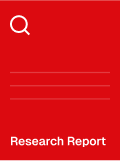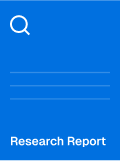
Alcohol Use Disorder Treatment Market- Growth, Share, Opportunities & Competitive Analysis, 2024 – 2032
Description
Market Overview
The Alcohol Use Disorder Treatment Market is projected to expand from USD 715 million in 2024 to an estimated USD 1,219.34 million by 2032, reflecting a compound annual growth rate (CAGR) of 6.9% from 2024 to 2032.
Several factors are driving the growth of this market, including the rising global prevalence of alcohol addiction, growing awareness of available treatment options, and increased investments in mental health care. As alcohol use disorders continue to pose significant public health challenges, governments and healthcare providers are prioritizing the development of effective treatment strategies, such as behavioral therapies, medication-assisted treatments, and support groups. Additionally, advancements in telemedicine and digital health platforms are improving access to treatment, especially for underserved and remote populations. The growing demand for personalized treatment approaches tailored to individual needs is also contributing to market growth.
Market Drivers
Increasing Government Support for Mental Health Initiatives
Government initiatives aimed at enhancing mental health awareness and supporting addiction treatment are vital drivers of the alcohol use disorder treatment market. In 2020, for example, the National Institute on Alcohol Abuse and Alcoholism (NIAAA) allocated over $500 million in grants for alcohol research and recovery programs. Additionally, the United Nations Office on Drugs and Crime (UNODC) has stressed the importance of strengthening addiction treatment systems globally, providing technical assistance and funding to low- and middle-income countries.
Market Challenges Analysis
High Treatment Costs and Limited Insurance Coverage
A significant challenge in the alcohol use disorder treatment market is the high cost of care, which can limit access for many individuals who need treatment. Effective alcohol addiction treatment often involves a combination of medical detoxification, inpatient or outpatient rehabilitation, therapy, and long-term support services. These treatments can incur substantial costs, particularly when extended over a long period. For instance, residential treatment programs in the U.S. can cost between $6,000 and $20,000 for a 30-day program, according to the National Institute on Drug Abuse (NIDA). For many individuals, these costs are prohibitive, which may prevent them from seeking treatment or completing their recommended therapy.
Segmentation
Based on Treatment Type:
Behavioral Therapy
Medication-Assisted Treatment (MAT)
Detoxification Services
Outpatient Services
Inpatient Services
Based on Technology:
Telemedicine
Virtual Therapy Platforms
Mobile Applications for Monitoring and Support
Digital Health Solutions for Recovery
Artificial Intelligence (AI) and Machine Learning (ML) in Treatment
Based on End-User:
Hospitals
Rehabilitation Centers
Outpatient Clinics
Home Care Settings
Online Recovery Platforms
Based on Region:
North America: U.S., Canada, Mexico
Europe: UK, France, Germany, Italy, Spain, Russia, Belgium, Netherlands, Austria, Sweden, Poland, Denmark, Switzerland, Rest of Europe
Asia Pacific: China, Japan, South Korea, India, Australia, Thailand, Indonesia, Vietnam, Malaysia, Philippines, Taiwan, Rest of Asia Pacific
Latin America: Brazil, Argentina, Peru, Chile, Colombia, Rest of Latin America
Middle East: UAE, KSA, Israel, Turkey, Iran, Rest of Middle East
Africa: Egypt, Nigeria, Algeria, Morocco, Rest of Africa
Key Player Analysis
AbbVie Inc.
Alcoholics Anonymous (AA)
Alkermes PLC
Camurus AB
Intercept Pharmaceuticals
Otsuka Pharmaceutical Co., Ltd.
Johnson & Johnson
Teva Pharmaceutical Industries Ltd.
Pernod Ricard
Kaiser Permanente
The Alcohol Use Disorder Treatment Market is projected to expand from USD 715 million in 2024 to an estimated USD 1,219.34 million by 2032, reflecting a compound annual growth rate (CAGR) of 6.9% from 2024 to 2032.
Several factors are driving the growth of this market, including the rising global prevalence of alcohol addiction, growing awareness of available treatment options, and increased investments in mental health care. As alcohol use disorders continue to pose significant public health challenges, governments and healthcare providers are prioritizing the development of effective treatment strategies, such as behavioral therapies, medication-assisted treatments, and support groups. Additionally, advancements in telemedicine and digital health platforms are improving access to treatment, especially for underserved and remote populations. The growing demand for personalized treatment approaches tailored to individual needs is also contributing to market growth.
Market Drivers
Increasing Government Support for Mental Health Initiatives
Government initiatives aimed at enhancing mental health awareness and supporting addiction treatment are vital drivers of the alcohol use disorder treatment market. In 2020, for example, the National Institute on Alcohol Abuse and Alcoholism (NIAAA) allocated over $500 million in grants for alcohol research and recovery programs. Additionally, the United Nations Office on Drugs and Crime (UNODC) has stressed the importance of strengthening addiction treatment systems globally, providing technical assistance and funding to low- and middle-income countries.
Market Challenges Analysis
High Treatment Costs and Limited Insurance Coverage
A significant challenge in the alcohol use disorder treatment market is the high cost of care, which can limit access for many individuals who need treatment. Effective alcohol addiction treatment often involves a combination of medical detoxification, inpatient or outpatient rehabilitation, therapy, and long-term support services. These treatments can incur substantial costs, particularly when extended over a long period. For instance, residential treatment programs in the U.S. can cost between $6,000 and $20,000 for a 30-day program, according to the National Institute on Drug Abuse (NIDA). For many individuals, these costs are prohibitive, which may prevent them from seeking treatment or completing their recommended therapy.
Segmentation
Based on Treatment Type:
Behavioral Therapy
Medication-Assisted Treatment (MAT)
Detoxification Services
Outpatient Services
Inpatient Services
Based on Technology:
Telemedicine
Virtual Therapy Platforms
Mobile Applications for Monitoring and Support
Digital Health Solutions for Recovery
Artificial Intelligence (AI) and Machine Learning (ML) in Treatment
Based on End-User:
Hospitals
Rehabilitation Centers
Outpatient Clinics
Home Care Settings
Online Recovery Platforms
Based on Region:
North America: U.S., Canada, Mexico
Europe: UK, France, Germany, Italy, Spain, Russia, Belgium, Netherlands, Austria, Sweden, Poland, Denmark, Switzerland, Rest of Europe
Asia Pacific: China, Japan, South Korea, India, Australia, Thailand, Indonesia, Vietnam, Malaysia, Philippines, Taiwan, Rest of Asia Pacific
Latin America: Brazil, Argentina, Peru, Chile, Colombia, Rest of Latin America
Middle East: UAE, KSA, Israel, Turkey, Iran, Rest of Middle East
Africa: Egypt, Nigeria, Algeria, Morocco, Rest of Africa
Key Player Analysis
AbbVie Inc.
Alcoholics Anonymous (AA)
Alkermes PLC
Camurus AB
Intercept Pharmaceuticals
Otsuka Pharmaceutical Co., Ltd.
Johnson & Johnson
Teva Pharmaceutical Industries Ltd.
Pernod Ricard
Kaiser Permanente
Table of Contents
200 Pages
- CHAPTER NO. 1 : INTRODUCTION
- 1.1.1. Report Description
- Purpose of the Report
- USP & Key Offerings
- 1.1.2. Key Benefits for Stakeholders
- 1.1.3. Target Audience
- 1.1.4. Report Scope
- CHAPTER NO. 2 : EXECUTIVE SUMMARY
- 2.1. Alcohol Use Disorder Treatment Market Snapshot
- 2.1.1. Alcohol Use Disorder Treatment Market], 2018 - 2032 (USD Million)
- CHAPTER NO. 3 : Alcohol Use Disorder Treatment Market - INDUSTRY ANALYSIS
- 3.1. Introduction
- 3.2. Market Drivers
- 3.3. Market Restraints
- 3.4. Market Opportunities
- 3.5. Porter’s Five Forces Analysis
- CHAPTER NO. 4 : ANALYSIS COMPETITIVE LANDSCAPE
- 4.1. Company Market Share Analysis – 2023
- 4.2. Alcohol Use Disorder Treatment Market Company Revenue Market Share, 2023
- 4.3. Company Assessment Metrics, 2023
- 4.4. Start-ups /SMEs Assessment Metrics, 2023
- 4.5. Strategic Developments
- 4.6. Key Players Product Matrix
- CHAPTER NO. 5 : PESTEL & ADJACENT MARKET ANALYSIS
- CHAPTER NO. 6 : Alcohol Use Disorder Treatment Market - BY Based on Treatment Type ANALYSIS
- CHAPTER NO. 7 : Alcohol Use Disorder Treatment Market - BY Based on Technology ANALYSIS
- CHAPTER NO. 8 : Alcohol Use Disorder Treatment Market - BY Based on Region ANALYSIS
- CHAPTER NO. 9 : COMPANY PROFILES
- 9.1. AbbVie Inc.
- 9.1.1. Company Overview
- 9.1.2. Product Portfolio
- 9.1.3. SWOT Analysis
- 9.1.4. Business Strategy
- 9.1.5. Financial Overview
- 9.2. Alcoholics Anonymous (AA)
- 9.3. Alkermes PLC
- 9.4. Camurus AB
- 9.5. Intercept Pharmaceuticals
- 9.6. Otsuka Pharmaceutical Co., Ltd.
- 9.7. Johnson & Johnson
- 9.8. Teva Pharmaceutical Industries Ltd.
- 9.9. Pernod Ricard
- 9.10. Kaiser Permanente
Pricing
Currency Rates
Questions or Comments?
Our team has the ability to search within reports to verify it suits your needs. We can also help maximize your budget by finding sections of reports you can purchase.


